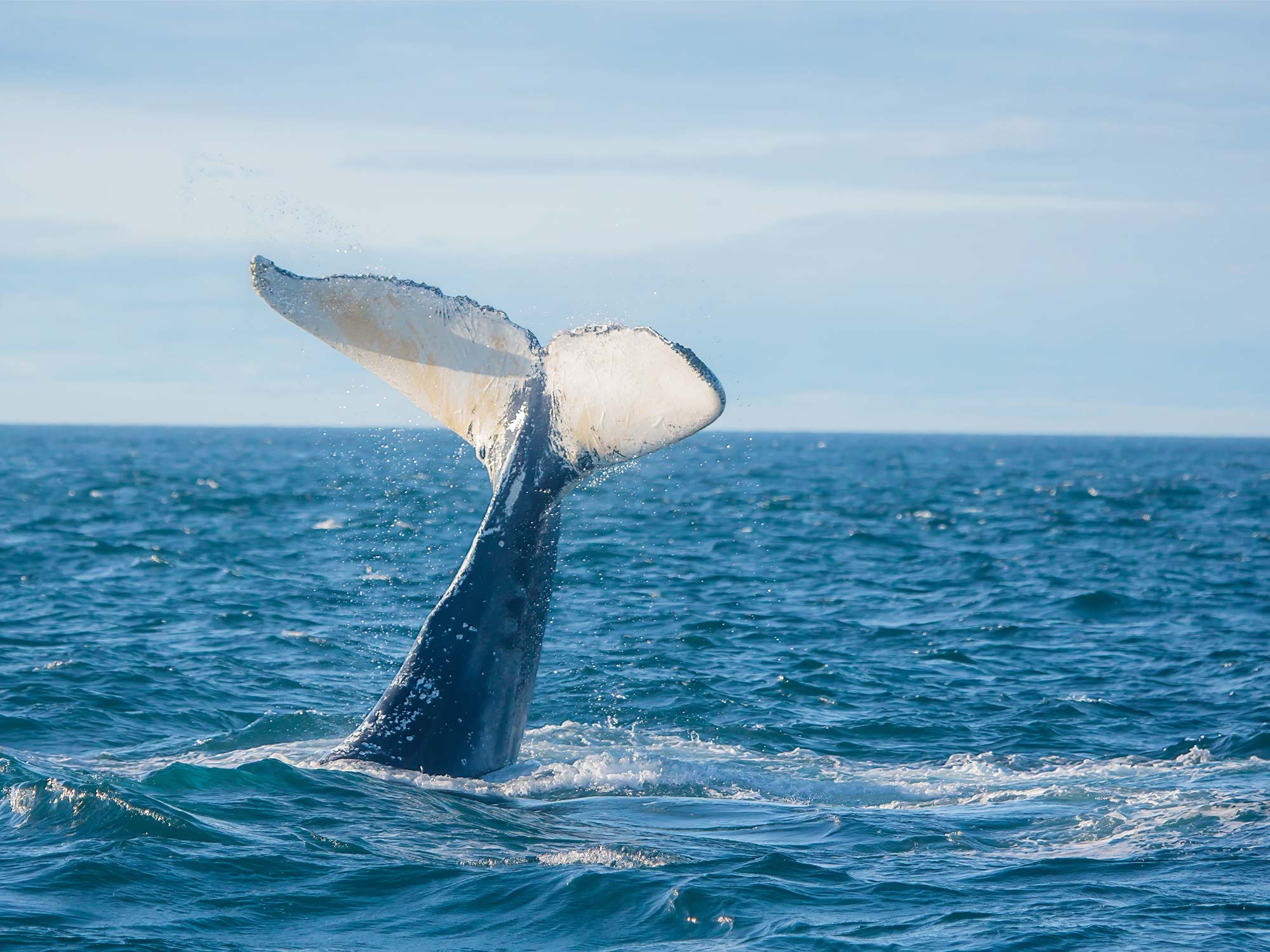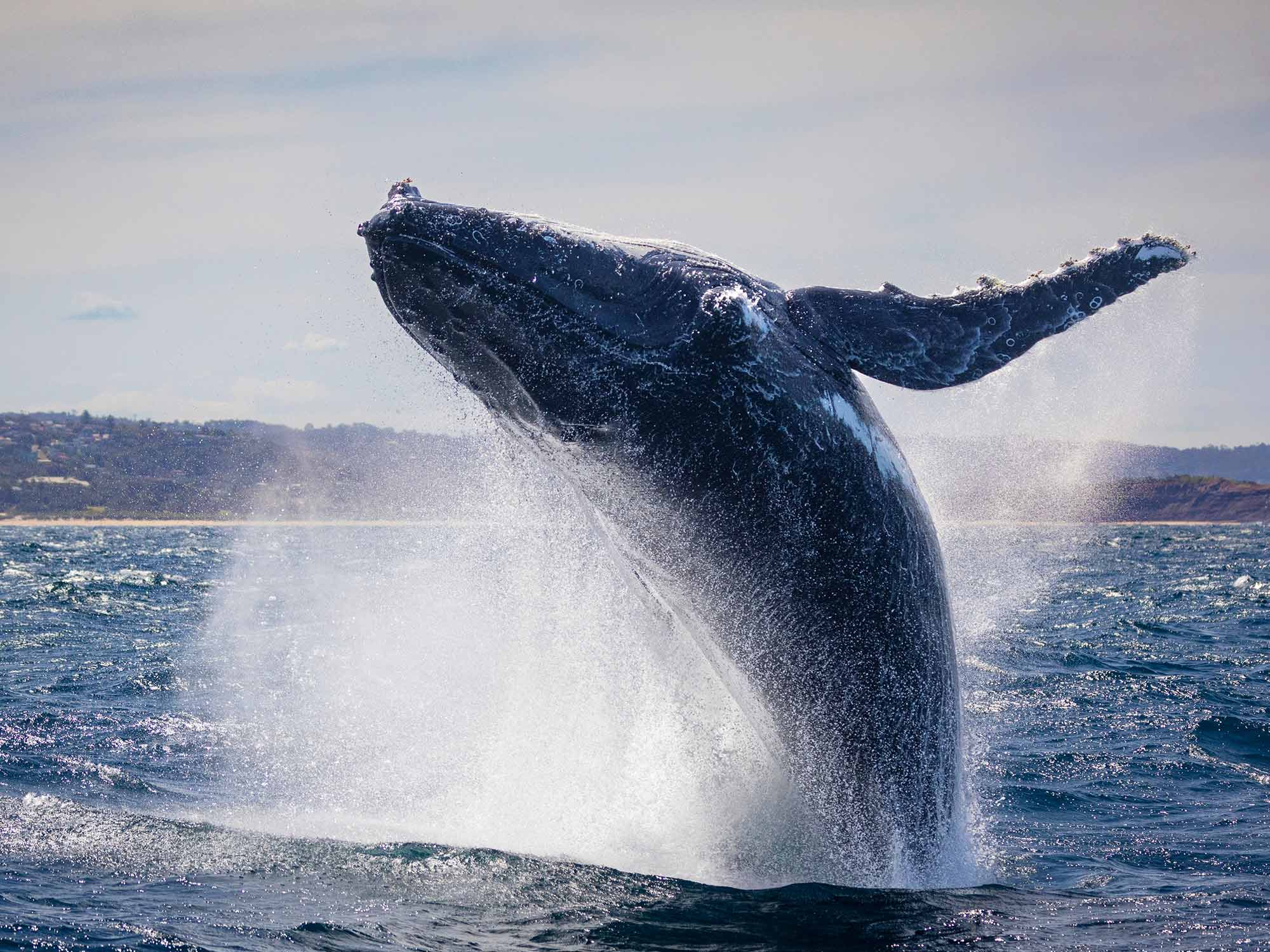Whales are the largest animals that ever existed on Earth. They are highly intelligent; they can travel in the vast ocean, communicate with each other in their own language, have their own culture, and sometimes even interact with humans. We are familiar with this mysterious animal.
Whales are not just huge animals. They play a significant role in marine ecosystems. Whales sequester 33 tons of carbon in their bodies on average during their long lives. A tree, meanwhile, absorbs only up to 20kg [48 pounds] of carbon a year.

Whales absorb carbon dioxide in their bodies while breathing. When they die, they sink to the ocean floor and all the carbon dioxide that is stored in their enormous bodies is transferred from surface waters to the deep sea, where it remains for hundreds of years. That is why whales are also called the natural carbon sink. Additionally, a single whale skeleton provides food and habitat for up to 200 species in the deep sea ecosystem.
In the 2010 study, scientists found out that before industrial whaling, the populations of whales would have sunk between 190,000 to 1.9 million tons of carbon dioxide per year to the bottom of the ocean—that is the equivalent of taking between 40,000 and 410,000 cars off the road each year. But when the carcass is prevented from sinking to the seabed, that carbon is released into the atmosphere.
Andrew Pershing, a marine scientist, estimates that over the course of the 20th century whaling added about 70 million tons of carbon dioxide into the atmosphere. “This is a lot, but 15 million cars do this in a single year. The U.S. currently has 236 million cars,” he says.
Whales Protect Marine Ecosystems

Whales return to the surface to breathe and poo. Their iron-rich feces become food for phytoplankton. Phytoplankton not only produce at least 50 percent of all oxygen to the earth’s atmosphere, but they also capture about 37 billion tons of CO2. This is equivalent to the amount of CO2 captured by 1.70 trillion trees—four Amazon forests’ worth.
Whales’ waste products contain exactly the substances—notably iron and nitrogen—phytoplankton need to grow, which greatly contributes to the reproduction of phytoplankton. Whales also bring nutrients such as nitrogen and phosphorus from the ocean’s depths up to the ocean surface through their vertical movement. In colder regions, such as in the Southern Ocean, they produce iron wherever they go, increasing phytoplankton in the ocean. More phytoplankton means more oxygen and more carbon capture.
Restoring Ecosystems to Save Earth
Although the international community is making efforts to reduce carbon emissions through various conferences and treaties, human emissions of carbon dioxide is increasing day by day. The effect of carbon emissions does not appear immediately, but it gradually warms the atmosphere for 20 years. This means that even if the international community achieves zero emissions right away, the climate crisis will be worse for at least 20 years. So scientists are working on the solutions, such as capturing carbon directly from the air and burying it in the earth, but these methods are extremely difficult, untested, and expensive.
The simplest way to prevent climate change by capturing greenhouse gases emitted into the atmosphere is to restore the ecosystems. The diverse and complex ecosystems perfectly maintain the global environment, and they recover quickly even when disasters occur. However, due to the industrial activities of mankind, the present ecosystems have become monotonous and weak. Whale populations have also been significantly reduced due to severe marine pollution and whaling.
Over the past 100 years, overall whale populations are now less than one- fourth of what they once were. Some species, like the blue whales, have been reduced to only 3 percent of their previous abundance. Despite the drastic reduction in commercial whaling, whales still face significant life-threatening hazards: Ship strikes, entanglement in fishing nets, waterborne plastic waste, noise pollution etc.
Let’s Protect Whales

If whales’ ecosystem gets recovered, it can significantly increase the amount of phytoplankton in the oceans and of carbon they capture each year. At a minimum, even a 1 percent increase in phytoplankton productivity thanks to whale activity would capture hundreds of millions of tons of additional CO2 a year, equivalent to the sudden appearance of 2 billion mature trees.
Enhancing protection of whales from human-made dangers would deliver benefits to human welfare and economy, and of course, to the planet. The human-tech approach to carbon sequestration has the risk of unanticipated harm from untested high-tech fixes. Nature has had millions of years to perfect her whale-based carbon sink technology. Now is the time for us to protect whales who protect our planet in the ocean.